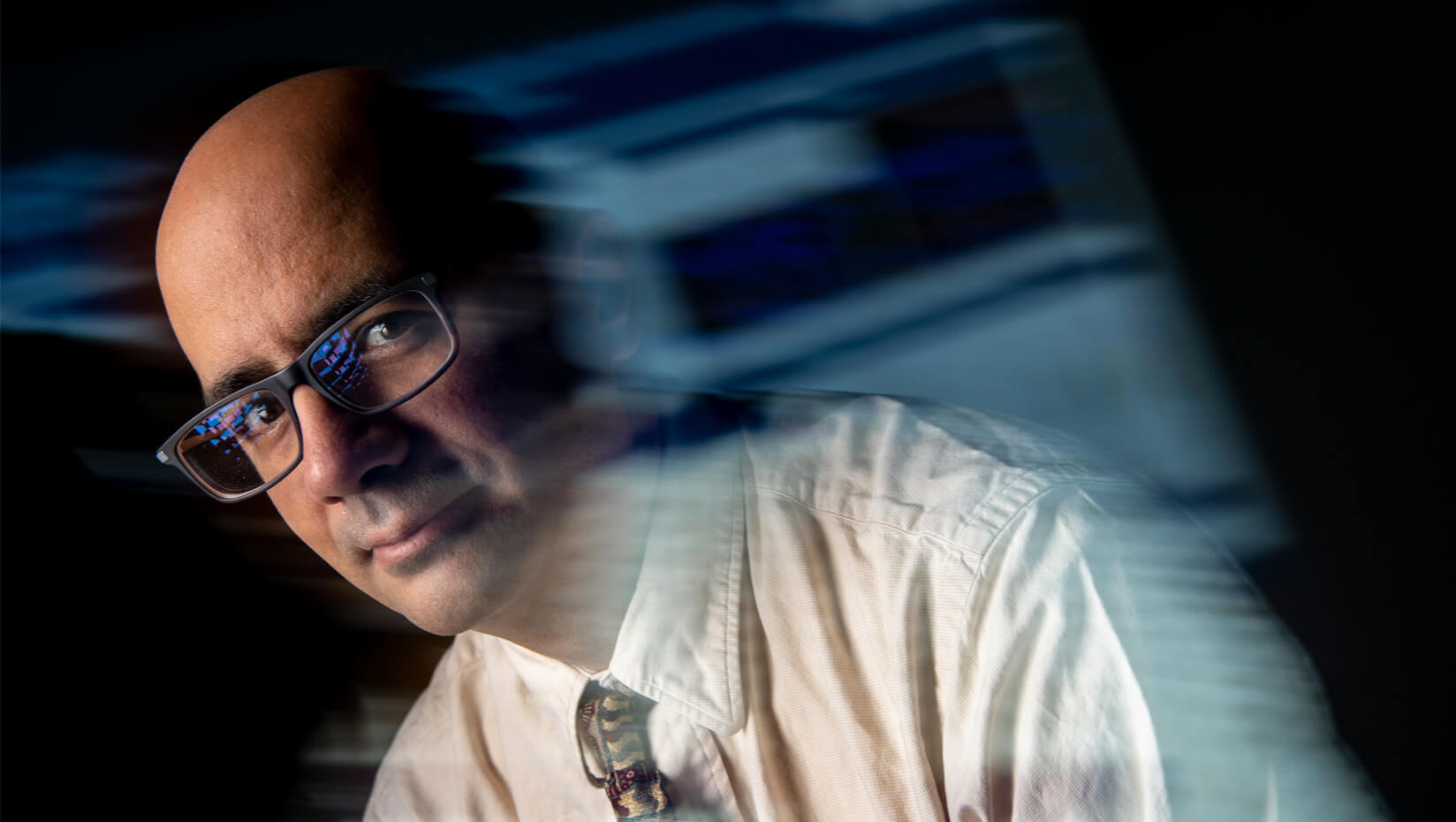
UMaine receives patent for technology to aid in early detection of breast cancer
The University of Maine has been issued a patent for a computational approach that has the potential to assist in the early detection of breast cancer. With further validation, the recently patented technology could help identify dormant potentially cancerous tissue before it progresses to an aggressive metastatic cancer, allowing clinicians to take a proactive treatment approach.
The invention is a method that analyzes the characteristics of different regions of breast tissue on a mammography image. By analyzing the whole breast image, the computational technique evaluates the overall environment in each tissue region by characterizing the “roughness,” which is a measure of spatial density fluctuations.
Cancer-associated mammogram regions have a peculiar roughness signature that is different from the regions of healthy, dense and fatty tissue that make up the breast. Current computer-aided detection/diagnostic (CAD) methods can identify the presence of cancer, but are of limited predictive value.
Based on mammograms and known outcomes from patients, other researchers have trained computers to detect patterns in breast tissue that are precursors to malignant tumors. UMaine’s technology, by contrast, is an algorithm based on an underlying biophysical hypothesis. Rather than teaching a computer to analyze mammograms based on knowledge of other mammograms, this technology can identify the physical markers believed to be linked to malignant tumor onset and growth.
The UMaine inventors are Andre Khalil, associate professor of chemical and biomedical engineering and founding director of the Computational Modeling, Analysis of Images, and Numerical Experiments Lab (CompuMAINE), and Kendra Ann Batchelder, a former graduate student. Funding that has led to this invention in large part came from the Maine Cancer Foundation.
“Subregions of a mammogram that display certain ‘roughness’ characteristics are found statistically significantly more often in cancerous mammograms vs. non-cancerous mammograms,” says Khalil. “Our lab coined the term ‘disrupted tissue’ to refer to these regions that show a loss of mammographic tissue equilibrium.
“The computational technique we have developed provides a clearer picture of the breast tumor microenvironment, which we believe is key to better understanding the way breast cancer develops and progresses,” Khalil says.
Mammography remains the primary method of breast cancer screening employed in the United States. According to statistics from the Centers for Disease Control and Prevention (CDC), 65.3% of women aged 40 and older had a mammogram within the last two years. CDC data show that 17.3 million mammograms were ordered or provided during physician office visits in 2016.
The long-term goal for this technology is to allow providers to extract more valuable diagnostic information from a test that is already performed regularly.
“Breast cancer is the second most-common cancer among American women and this technology has the potential to revolutionize the screening and treatment process,” says Jake Ward, UMaine vice president for innovation and economic development. “It is emblematic of the work UMaine researchers are carrying out across disciplines that can advance understanding and solve real-world problems.”
Khalil’s ongoing work on this topic seeks to answer whether tumors cause these disrupted tissue regions or the disrupted regions create the right environments for tumors to grow. He recently presented on this question at the 2019 San Antonio Breast Cancer Symposium, a five-day conference dedicated to state-of-the-art information on breast cancer research that is attended by an international audience of academic and private researchers and physicians from more than 90 countries.
“We’re developing a predictive algorithm that is sensitive to currently undetectable alterations of the microenvironment that precede the development of tumors,” says Khalil. “If successful, we could move away from the current reactive treatment status quo and toward a clinical strategy based on predictive medicine that empowers both patients and clinicians.”
The University of Maine is actively seeking a development partner for the technology. The patent number is U.S. 10,467,755 B2.
Contact: Renee Kelly, rwkelly@maine.edu, 207.581.1401
